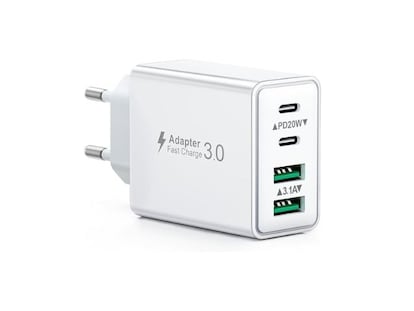Is your olive oil extra virgin or a cheap imitation?
Researchers at the University of Bologna come with new proposal of analytical method to evaluate the quality of extra virgin olive oil.
Have you ever found yourself looking to buy a bottle of vegetable oil at the supermarket only to find yourself staring at the display of many different products without being able to choose one?
If you look long enough, you may find yourself going from seed oil to pomace olive oil, to olive oil, and in the end, to extra virgin olive oil. Consumers from the Mediterranean area, based on their cultural heritage and traditions, may choose to buy a type of oil derived from olives. Similarly, well-informed consumers may choose virgin olive oil for its nutritional, health and sensory properties.
European regulations have different requirements for the process of extracting extra virgin olive oil as compared to other vegetable oils. Extra virgin olive oil must be from the mechanical crushing of olives and should not be subjected to chemical or physical treatments that change its composition. In addition, it must be not objectionable in terms of chemical and sensory parameters and must be edible as is. To maintain the high quality of extra virgin olive oil, production costs must be higher than for other vegetable oils.
But how is it possible that some extra virgin olive oil varieties are sold at a comparable or lower prices than olive oil, pomace olive oil, or seed oils?
The answer has to do with marketing strategies, for example, where wholesalers employ a bait-and-switch pricing strategy for extra virgin olive oil to attract consumers to the point of sale.
As often happens with premium quality foods, the extra virgin olive oil may be adulterated with illegal blends of low quality vegetable oils. The research group Chemical Evaluation of Foods and Food Analysis of the Department of Food Science of the University of Bologna (DiSA) has been studying the properties of vegetable oils for several years. Recent investigations concern the increasing suspected distribution of fraudulent non-genuine extra virgin olive oil. Such extra virgin olive oil appears to be a blend of genuine oil and oil produced from low-quality olives subjected to a low temperature deodorization treatment, an illegal procedure in the production of extra virgin olive oil. The aim of soft deodorization is to eliminate flavours derived from low-quality olives or from inappropriate procedures during oil extraction or storage, which are considered defects for extra virgin olive oils. This adulteration has been difficult to detect by oil analysts.
Recent work by Italian and Spanish researchers has resulted in a new method capable of detecting the presence of marker compounds, fatty acid alkyl esters (AEs), present in appreciable amount in low quality virgin olive oil. These molecules are formed in oil derived from degraded olives and resist the soft deodorization procedure. This method was recently adopted by the International Olive Oil Council (IOOC) and then recognized by the European Community (EC Reg. 61/2011, 24th January 2011).
Experiments carried out by the DiSA researchers, in collaboration with colleagues from the DiSTAM (Department of Food Science, Technology and Microbiology) University of Milan, focused on about sixty samples, of which an half were commercially available extra virgin olive oils sold at medium-to-low prices and the remaining were genuine oils sampled directly from oil mills. All samples underwent a traditional high-cost AE analysis, with a first phase of marker separation and purification and a second phase of analytical determination.
The new proposal method of analysing oils developed by the researchers is based on spectroscopic analysis in medium infrared spectrum (ATR-FT-MIR) and chemiometric elaboration of the results using modelling tools and classification methods applied to the spectral data. The new method fits well with strategies aimed at reducing timely procedures and minimising the use of expensive solvents that may be hazardous to not only the operators but also the natural environment.
Overall, by taking into consideration the legal limits of AE adopted by EC Reg. 61/2011, these researchers found that about one third of the products on sale on the market exceed these parameters.
The ATR-FT-MIR analytical method, which is quick, non-destructive and compatible with in-line use, confirmed the results obtained from the traditional high-cost AE analysis.
Based on these preliminary results, if carried out on a limited number of samples, the new analytical method produces a satisfactory reliability rate and a high speed of analysis execution. Moreover, it was conducted without the use of chemical solvents, making it suitable for applications by all operators of the oil sector.
Tu suscripción se está usando en otro dispositivo
¿Quieres añadir otro usuario a tu suscripción?
Si continúas leyendo en este dispositivo, no se podrá leer en el otro.
FlechaTu suscripción se está usando en otro dispositivo y solo puedes acceder a EL PAÍS desde un dispositivo a la vez.
Si quieres compartir tu cuenta, cambia tu suscripción a la modalidad Premium, así podrás añadir otro usuario. Cada uno accederá con su propia cuenta de email, lo que os permitirá personalizar vuestra experiencia en EL PAÍS.
¿Tienes una suscripción de empresa? Accede aquí para contratar más cuentas.
En el caso de no saber quién está usando tu cuenta, te recomendamos cambiar tu contraseña aquí.
Si decides continuar compartiendo tu cuenta, este mensaje se mostrará en tu dispositivo y en el de la otra persona que está usando tu cuenta de forma indefinida, afectando a tu experiencia de lectura. Puedes consultar aquí los términos y condiciones de la suscripción digital.
Archivado En
Últimas noticias
Los socialistas valencianos reclaman a Feijóo que entregue a la jueza de la dana la conversación íntegra con Mazón
‘Els nous altres catalans’: SER Catalunya vuelve a la obra de Paco Candel con la voz de Illa, Carla Simón o Greta Fernández
Restablecida la circulación de los trenes de larga distancia y alta velocidad en la estación madrileña de Chamartín
Localizada en buen estado en Italia Gina, la niña de cinco años que no fue devuelta por su padre
Lo más visto
- La revalorización de las pensiones queda en el aire por la negativa de la derecha a apoyar otras medidas sociales
- Juan Carlos Ferrero: “Más que dolor, siento pena; los finales siempre son tristes”
- El líder groenlandés responde a Trump: “Groenlandia es nuestro país. Nuestras decisiones se toman aquí”
- Los ‘whatsapps’ de Mazón a Feijóo del día de la dana: “Un puto desastre va a ser esto presi”
- La cúpula de Vox votó por unanimidad la destitución de Javier Ortega Smith




























































